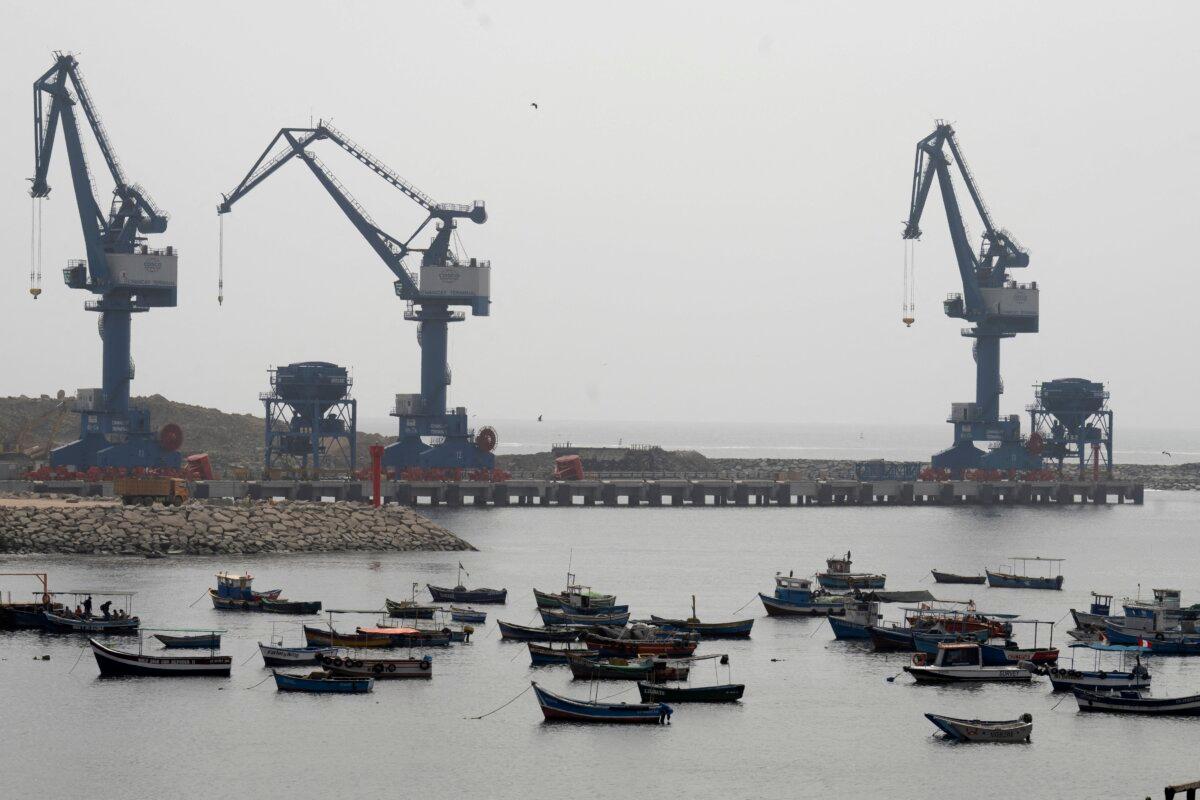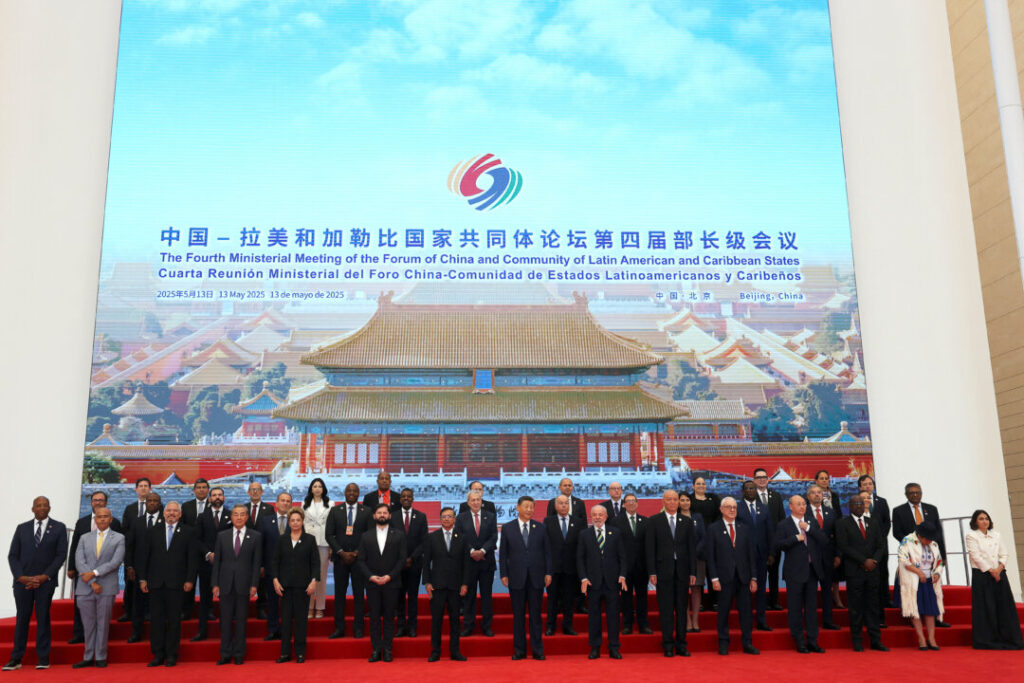Lula’s visit means Beijing opened a new battlefield in Latin America amid a global lockdown in the West, analysts say.
Brazilian President Luis Inacio Lula da Silva led a delegation of 200 businessmen to Beijing from May 10th to 14th, just as the US-China tariff war began to cool down.
Analysts said South America is a new battlefield between the Chinese Communist regime and the West due to its future global strategy and influence.
Brazil and China have signed 20 cooperative transactions in areas such as energy, science and technology, agriculture and railways, including a billion dollar investment in China’s environmental energy to produce sustainable aviation fuels in Brazil.
According to Chinese media Netease News, the total amount of the contract reached up to 100 billion yuan ($13.9 billion).
On May 12th, he signed a $1 billion investment agreement at the “China-Brazil Business Seminar” on China’s leading shopping platform Meituan, and within months he will launch the Keeta Food Delivery app in South American countries. Wang Xing, founder and CEO of Lula and Meituan, attended the signing ceremony.
While in Beijing, Lula also attended China and the community at the Latin America and the Caribbean (CELAC) Forum, which began on May 13th. Approximately 30 Latin America and the Caribbean (LAC) countries attended the Ministerial Conference.
Xi Jinping, leader of the ruling Chinese Communist Party (CCP), told the conference that China will increase imports from LAC countries, including Lula and Colombian President Gustavo Petro, and encourage Chinese companies to invest more in the region.
Xi said China and Latin America will “come together in tough times to overcome challenges through mutual support.”
Meanwhile, Lula said at the meeting that Latin American countries should not rely too much on external funding.
“It is important to understand that (Latin American destiny) is not dependent on others. It is not dependent on President Xi Jinping, it is not dependent on the US, it is not dependent on the European Union.
Before Lula’s visit, China lifted the import ban on five Brazilian soybean companies due to phytosanitary issues. As the US-China tariff war continued, China increased its purchases of Brazilian soybeans. Brazilian soybeans account for more than 70% of China’s soybean imports, while US imports have dropped to 24%.
San Guxian, a professor at the Ministry of International Affairs at Nanhua University in Taiwan, told the Epoch Times that lifting the CCP’s soy import ban is a way to “beat Brazil.”
During the US-China trade war, the Chinese administration has served as a stable source of Brazil to ensure China’s “food supply security” while reducing its share of US agricultural products in the Chinese market, he said.
US-based economist Davy J. Wong told the Epoch Times on May 13 that Lula’s trip to Beijing was not a normal national visit.
“The Beijing lift, essentially a ban on imports of soybeans in Brazil, is not about solving domestic food problems, but about regaining the impact in South America that was on the slipping crisis of North American control,” he said.
A new railway to bypass the Panama Canal?
The China-Brazil Transport Link, also known as the Twin-Ocean Railroad Connection Project, is one of several ongoing projects between Brazil and China. This includes the joint construction of a 3,100-mile railway across the South America, linked to the port of Chansei on the eastern coast of Brazil and the west coast of Peru.
Chansei Port is being built by the China state-owned company Cosco’s shipping port. According to Chinese state media, the aim is to provide “alternative delivery routes” and “shipping reductions” between China and Latin America. Xi also paid attention to the transcontinental railway in his speech at the China-Celac Forum.
Behind the rapid signing of these railways and energy agreements is the strategic logic of the CCP. “It’s about using market-driven diplomacy and infrastructure to lock down opposing dependence on Beijing.”
“In particular, the concept of a marine railway via which runs directly across South America and into the Pacific is not a simple economic project, but a strategic channel where Beijing is trying to balance the East Coast of the Americas,” he said.
“That means Beijing is incorporating Brazil into its offshore expansion strategic zone. As it can sail directly from the Pacific to the west coast of South America, it could potentially extend to mineral-rich countries such as Argentina and Bolivia in the future.

On October 29, 2024, views of a traditional fishing boat anchored in the town’s port in the background north of Lima, Peru. Cris Bouroncle/AFP via Getty Images
Frank Shee, a business professor at the University of South Carolina Eiken University, agreed.
“The CCP clearly wants to support the Trans-Atlantic Railroad at this point through South American land transport, connecting the Atlantic and Pacific oceans, and bypassing the Panama Canal. I think this is part of the CCP’s global strategy.
However, the Brazilian government may ultimately have to reach an agreement with the US instead, Xie told the Epoch Times on May 13.
“After all, CCP is a little too far away and not very reliable. Like many countries, Brazil still wants to have a delicate balance between the US and China, so it can benefit from both sides,” he said.
Latin America: New Battlefield
Wong said the Lula government took an “opportunistic approach” with China and the US. He said it was “not a coincidence” that Lula was visiting China at this point as China and the US race continued.
“Without leaning completely towards Beijing, he can squeeze out the maximum amount of support and favorable conditions from Beijing. This is a typical operation in the country playing both sides. On the one hand, he screams for autonomy and independence.
Sun pointed out that Lula has been “a long-standing China and places great importance on establishing a “global South strategic partnership” with China.”
Sun said Lula, who is in his third term, has a greater emphasis on “multilateralism and “derailment.”
In diplomacy, Sun said, “Lula tends to deepen cooperation with non-Western powers such as China and Russia, but tends to avoid direct conflict with the United States.”
However, Wong said Lula should not be merely classified as Providin. “In fact… a political force that can mobilize political and economic resources to maneuver between China and the United States in a space where they compete for influence.”
Furthermore, Wong said, “South America is not a new ally in Beijing, but a new battlefield for future global strategy.”
Lula’s visit to China is “just a variable in the reshaping of the world’s order.”
“That’s not a sign of Beijing’s victory, but at least it means that Beijing has opened a new battlefield under global lockdown in the West,” he said.
As competition continues between Beijing and Washington, San said “Brazil could make up a larger share of China’s “anti-US supply chain replacement plans.”
As US-China relations continue to deteriorate, “Brazil may further strengthen its dependence on China and form a structural trend,” San said.
“In emerging economies, a 90-day buffer period allows India, Southeast Asia, Africa and other countries to observe the risks of China and the US and assess whether they will increase exports to China or attract Chinese investment,” Sun said.
Luo Ya, Xia Song and Reuters contributed to this report.



